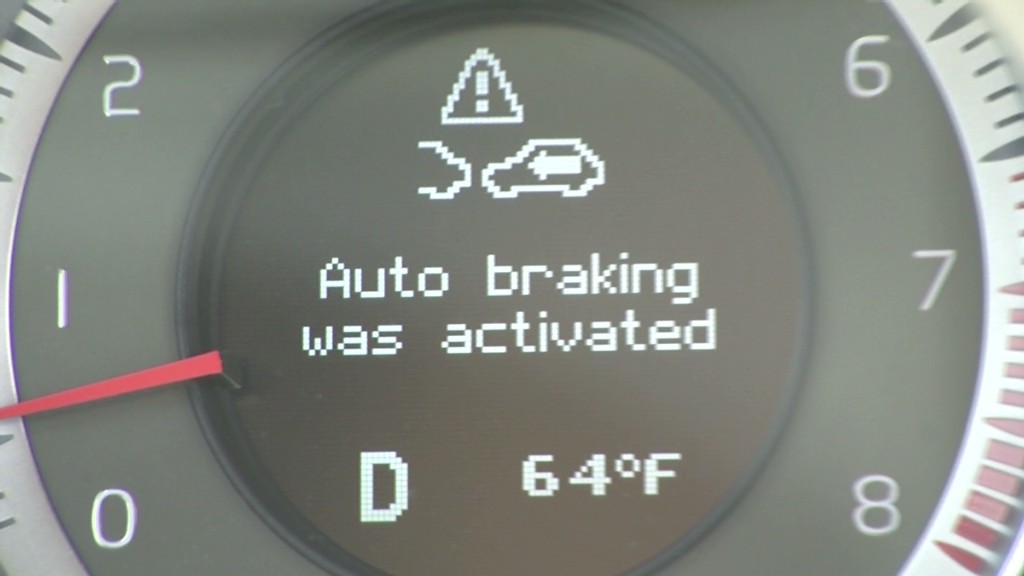
Over 1,700 people were killed and 500,000 injured in rear end crashes 2012, according to a federal safety agency.
That's why the National Transportation Safety Board is urging regulators to make automatic braking systems a standard feature on all new cars.
"Safety should be a basic feature rather than an option we have to purchase and that only the wealthier buyers can afford," said NTSB chairman Christopher Hart. Many crashes could be avoided or mitigated had automatic braking systems been in place, he said.
The NTSB is best know for investigating airline and train crashes. It doesn't set regulations, so it's asking the National Highway Traffic Safety Administration, which does, to implement rules requiring the system on all new cars and trucks. It says the rules should have been put in place years ago.
Automatic braking systems use cameras and laser radar to slow or stop a car if there is a stopped vehicle or some other obstacle ahead of it. Generally it is available on more expensive models, often as part of a package of options that can cost thousands of dollars.
Related: The best (and worst) crash avoidance technologies
The technology is becoming more widely available. For example General Motors (GM) offers it in a package of different safety features that costs $1,200. It is now expanding that option to non-premium cars such as the Impala, and will offer it on the 2016 Malibu due out later this year.
Toyota (TM) said earlier this year it will offer automatic braking and some other safety features on the Rav4, one of its most popular models, and plans to expand that to some other mass market cars for between $300 to $500. Toyota expects to offer the safety package on all of its cars within a few years.
But while the technology is spreading, the automakers are resisting the call to make the feature standard on every car.
Related: Google's self-driving car is ready for the road
"Automakers are very excited about automatic braking. But consumers want to be in the driver's seat when it comes to deciding on how they spend their safety dollars, and automakers agree," said Gloria Bergquist, spokeswoman for the Alliance of Automobile Manufacturers, the industry trade group.
She pointed out that rear-view cameras, which allow drivers to see behind them when backing up, are now in a majority of new cars without any regulatory requirement.
But that feature will a required feature on all cars starting in May 2018 under rules passed by NHTSA last year.
Earlier this year NHTSA did add automatic braking to the list of recommended safety options that car buyers should consider.
NHTSA did not have any comment NTSB's proposal or its criticism of the agency.

